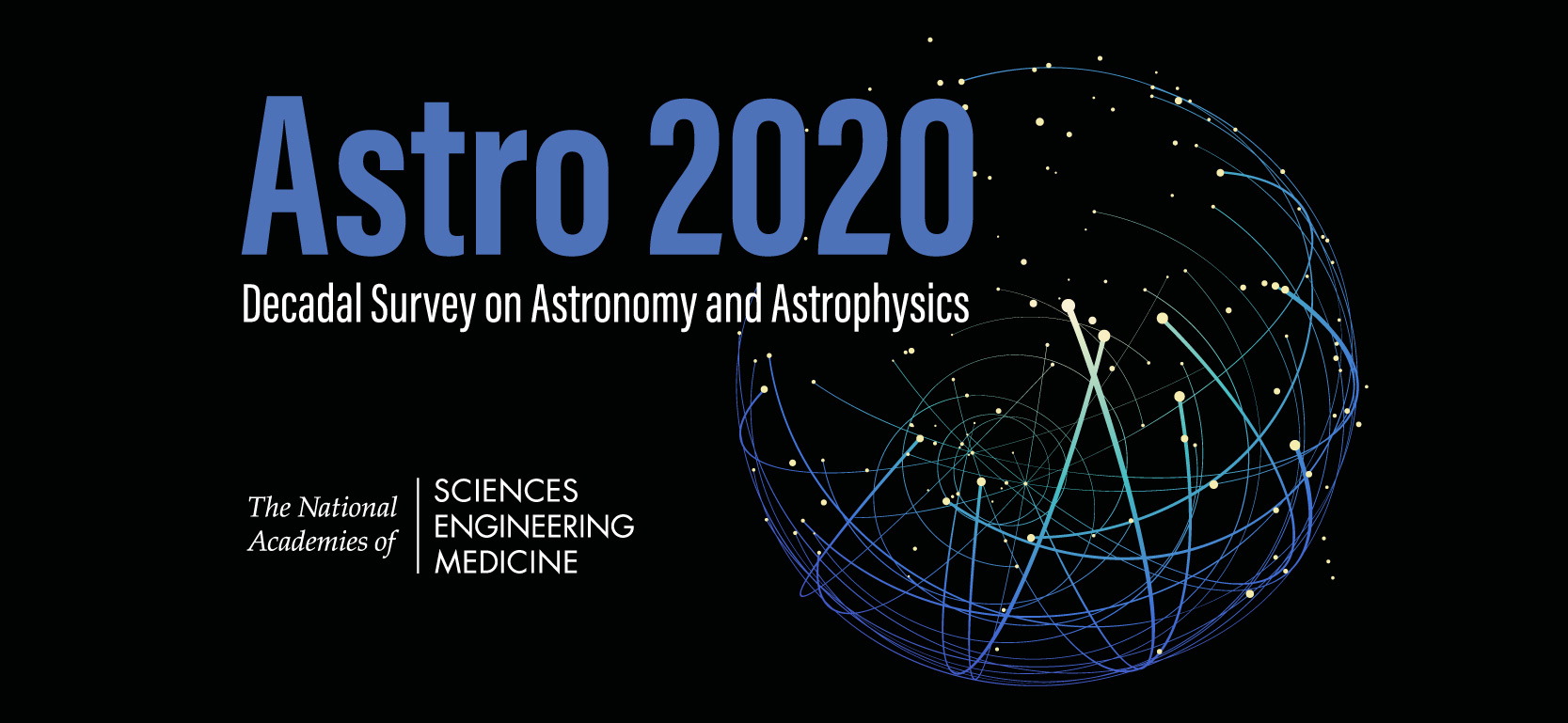
Just over a week ago astronomers from all over the United States submitted white papers (after a delay due to the partial government shutdown) to the Astro2020 decadal survey on topics across the field of astronomy. Specifically, authors were asked to identify and outline the cutting edge topics in astronomy and astrophysics and detail what measurements are necessary to advance those topics over the next decade. Chances are good that if you are interested in a topic, you can find a white paper about it. At the time of posting this there were just over 200 Astro2020 white papers on arXiv (which is about a third of the total submissions which you can find here). The decadal survey committee will use these papers to identify research priorities and make recommendations for the next decade.
The decadal survey process, and the document it produces, is the backbone of astronomy in the United States. The field comes together every ten years and decides what to prioritize. With the scientific priorities in mind, the decadal survey also recommends large scale facilities (ground and space based) which will help the community reach those goals. Congressional committees and government agencies can then point to this report when allocating or requesting funds. The survey is run jointly by the Board of Physics and Astronomy and the Space Studies Board of the National Academies, and thus carries the weight of the entire American astronomical community.
One of the biggest decisions set before the committee is selecting the next large space telescope. Past decadal surveys have recommended the Chandra and Spitzer space telescopes (1990), JWST (2000) and most recently WFIRST (2010). While the latter two missions have yet to launch, this new survey will decide between four proposed missions: Lynx, a next generation X-ray observatory to succeed Chandra, Origins Space Telescope, a large fully cryogenic infrared to submillimeter observatory, LUVIOR, a folding (similar to JWST) 8 or 15 meter ultraviolet optical and infrared telescope, and HabEx, a 4 meter UV optical and IR telescope paired with a starshade designed to directly image Earth-like exoplanets. It will be very difficult to choose just one!
As for ground based observatories, the decadal survey also has a history of recommendations. These include the Very Large Array, the Very Long Baseline Array, the Atacama Large Millimeter Array, and the Large Synoptic Survey Telescope. The field of ground based observatories is certainly less competitive now that GMT and TMT have combined forces under the US-ELT Program, though there is still some competition.
Keep an eye out for news about the survey and look for the final report in about a year. In the mean time I recommend taking a look at some of the white papers. They are short (only 5 pages) and summarize the current state and future directions of a subfield. Searching Astro2020 and your favorite astronomy keyword on arXiv should bring up a few. Or check out the previous decadal surveys in astronomy and planetary science here, and how well we followed it here.
Read the origional post at astrobites.org.